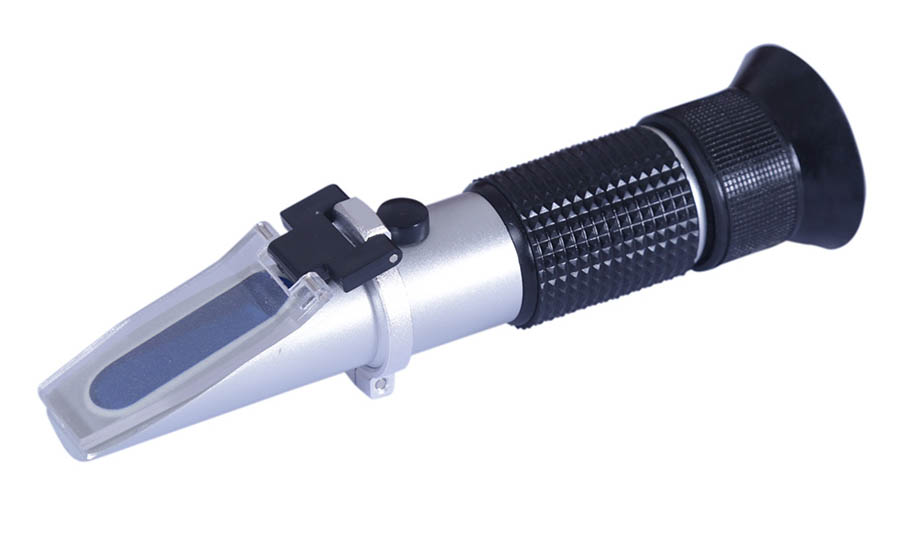comprehensive guide to digital salinity refractometer
DATE:2024-03-14
comprehensive guide to digital salinity refractometer
Digital salinity refractometers are an essential tool for measuring and monitoring salt levels in liquids. They are commonly used in various industries, including agriculture, aquaculture, and water treatment. These digital devices have replaced traditional analog refractometers due to their accuracy, ease of use, and advanced features. In this comprehensive guide, we will explore the working principle, features, and benefits of digital salinity refractometers.
Working PrincipleThe working principle of a digital salinity refractometer is based on the difference in the refractive index of a liquid and air. This difference is caused by the concentration of salt in the liquid. When light passes through the device, it is refracted due to the difference in refractive index. The device then measures the angle of refraction and converts it into a digital reading. This reading is then compared to a pre-programmed salt concentration scale to determine the salinity level of the liquid.
Features
Digital salinity refractometers come with a variety of features that make them highly accurate and user-friendly. Some of the common features to look for in a digital salinity refractometer are:
1. Automatic Temperature Compensation: This feature ensures that the device takes into account the temperature of the liquid and adjusts the reading accordingly. This is important because the refractive index of a liquid changes with temperature, and without this compensation, the readings can be inaccurate.2. Automatic Calibration: Most digital salinity refractometers come with an automatic calibration function, which eliminates the need for manual calibration. This ensures accuracy and reduces the chance of human error.
3. Dual Scale Readings: Some devices offer readings in both parts per thousand (ppt) and specific gravity (SG), making it easier for users to understand and compare measurements.
4. Waterproof Design: As these devices are commonly used in wet environments, it is important to choose one with a waterproof design to ensure durability and accuracy.
5. Backlit LCD Display: A backlit display makes it easier to read the digital readings in dimly lit areas or at night.
Benefits
Digital salinity refractometers offer several benefits over traditional analog refractometers. Some of these benefits include:
1. Accuracy: Digital salinity refractometers offer higher accuracy compared to traditional analog refractometers. They can measure with precision up to 0.1 ppt, making them suitable for precise applications.
2. Speed: These digital devices provide instant readings, which saves time and increases efficiency.
3. User-friendly: The digital display and automatic calibration make these devices very user-friendly, even for those who are not familiar with using refractometers.
4. Portability: Digital salinity refractometers are compact and can easily be carried around, making them ideal for on-site testing.
5. Data Storage: Some devices come with the ability to store previous measurements, making it easier for users to track changes in salt levels over time.
Applications
Digital salinity refractometers have a wide range of applications, some of which include:
1. Agriculture: Farmers and crop growers use digital salinity refractometers to measure the salt content in soil and irrigation water. This is crucial in determining the health of the soil and ensuring optimal plant growth.
2. Aquaculture: Fish and shrimp farms use digital salinity refractometers to monitor salt levels in their tanks. Maintaining the right salinity level is crucial for the health and survival of aquatic animals.
3. Water Treatment: Water treatment plants use digital salinity refractometers to monitor the electrolyte levels in the water. This helps in the purification process and ensures that the water is safe for consumption.
4. Food Industry: In the food industry, digital salinity refractometers are used to measure the salt content in various products such as sauces, brines, and dips. This ensures that the products meet the required standards and are safe for consumption.
digital salinity refractometers are essential tools in various industries for measuring and monitoring salt levels in liquids. With their advanced features, accuracy, and ease of use, they have become the go-to choice for professionals and hobbyists alike. When choosing a digital salinity refractometer, it is important to consider the features, applications, and the specific needs of your industry to ensure you get the most suitable device for your needs.

Products List
- Digital Refractometers
- New style refracometer
- Brix-Handheld Refractometer
- Honey refractometer
- Oechsle & Brix Refractometer
- Beer Brewing refractometer
- Salinity-Handheld Refractometer
- Alcohol refractometer
- Battery/Antifreeze/Cleaning Fluid--Refractometers
- AdBlue & Urea refractometer
- Clinical Protein-Handheld Refractometer
- Built LED refractometer-Handheld Refractometer
- Refractometer
- Hand Held Refractometer
- Brix Refractometer
- Honey refractometer
- Oechsle & Brix Refractometer
- Beer Brewing refractometer
- Salinity-Handheld Refractometer
- Alcohol-Handheld Refractometer
- Battery/Antifreeze/Cleaning Fluid-Handheld Refractometer
- AdBlue & Urea refractometer
- Clinical Protein-Handheld Refractometer
- Large refractometer
- Built LED refractometer
- Gem Tester
- Fiber Inspection Microscope
- Benchtop Fiber Inspection Microscope
- VISUAL FAULT LOCATORS
- Optical instrument parts processing
Contact Details
- 2F,Building A,Commercial street,Louxia Village,Jianxin Town,Cangshan District,Fuzhou,Fujian,China
- +86 591 86397981
- +86 591 86397981
- sales@fjstat.com
- www.fjstat.com
- Contact Form

